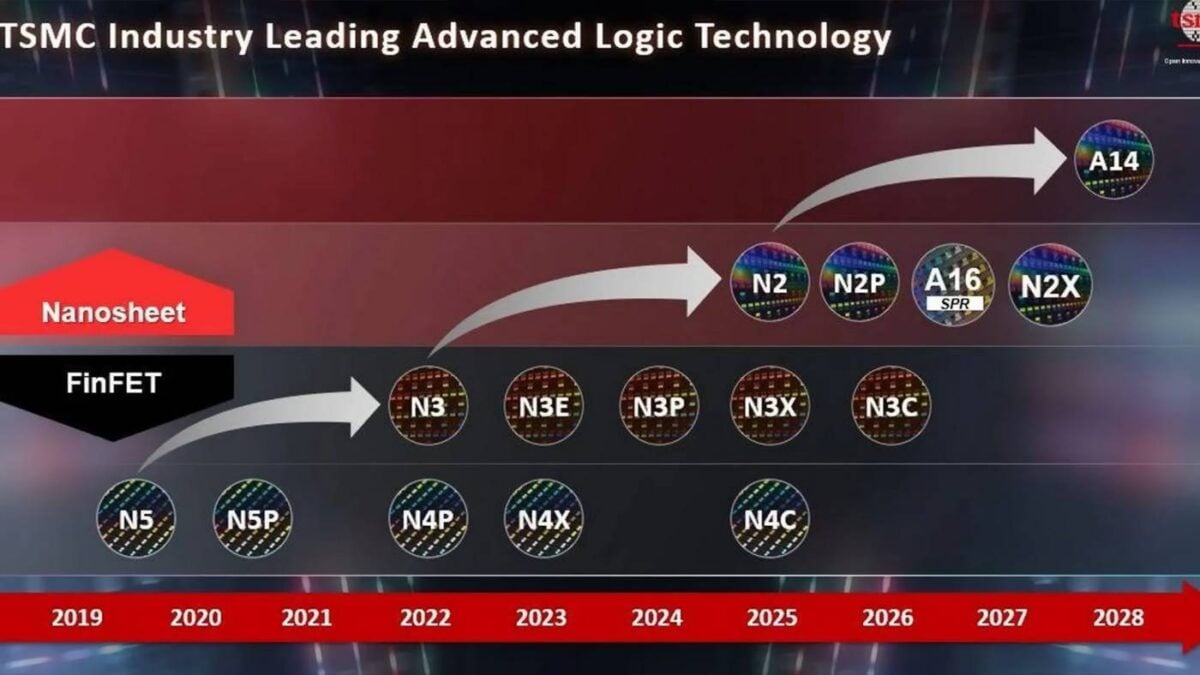AMD may be forced to delay its much-awaited Zen 6 processors as a new TSMC roadmap shuffles plans, according to YouTuber Moore’s Law Is Dead. Expected to be manufactured using TSMC’s N2X node, next-gen Ryzen CPUs may have to wait a bit longer – around nine months or so – for the process to mature or to settle for another node in the meantime.
Previously set to become available to TSMC’s partners sometime in 2026, the N2X manufacturing node has seemingly been pushed to 2027. Said to be needed to achieve the performance targets of Zen 6, such as the rumoured 7GHz core frequency, its absence may force AMD to reconsider its launch schedule. Just to be clear, AMD has yet to announce Zen 6 specs, let alone a release date, but leaks have indicated that internally the brand is eyeing a mid/late 2026 launch.
Considering this, a delay would break the brand’s ongoing release cadence, which sees new product generations releasing every two years or so.
- Zen 2 (Ryzen 3000) — released July 7, 2019.
- Zen 3 (Ryzen 5000) — released November 5, 2020, about 16 months after Zen 2.
- Zen 4 (Ryzen 7000) — released September 27, 2022, about 22 months after Zen 3.
- Zen 5 (Ryzen 9000) — released July 17, 2024, about 22 months after Zen 4.

If the leaks are correct regarding the N2X node necessity for Zen 6, AMD may be forced to implement a temporary strategy to counter Intel’s upcoming Nova Lake CPUs. Team Red could opt for a two-phase launch starting with chips targeting a slower 6GHz clock, manufactured using the N2P node. Then when the N2X becomes ready for mass production, AMD could release refreshed versions that manage 7GHz.
If this isn’t possible due to design constraints, then another option could be a Zen 5 refresh. The rumoured dual-X3D models could be a worthy stopgap that should please many customers without requiring new manufacturing processes.
That said, AMD may also choose a third option consisting of starting slow and growing production as N2X yields improve. The brand could stagger its Ryzen 10000 lineup, or whatever it ends up being called, focusing first on high-margin models.
As for why AMD wouldn’t simply wait for TSMC to iron out its N2X production, well, it’s mainly because of OEMs which require a constant flow of new chips to power their next-gen laptops and desktops. DIY consumers shouldn’t mind much a little wait, especially if Zen 6 turns out to be great.
AMD’s timeline hinges entirely on TSMC’s capacity to follow its roadmap. No wonder AMD is looking to diversify its production lanes, even if it means using Intel’s foundries.
In time or late, Zen 6 is expected to be compatible with existing AM5 motherboards, while boosting the core count on desktop models from 8 cores per CCD (Core Complex Die) to 12 cores per CCD. We can’t wait to see how this translates into real-world performance.


